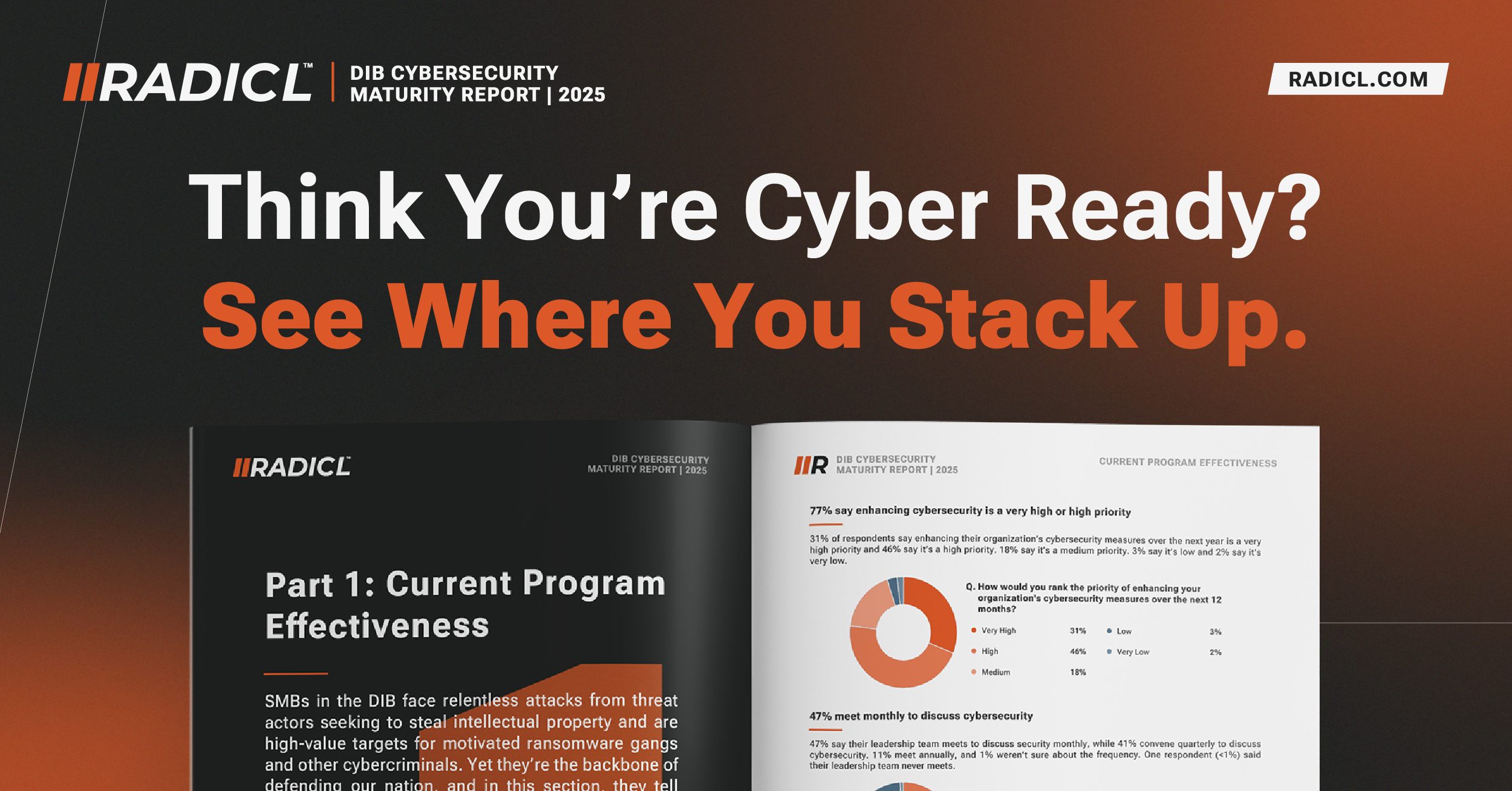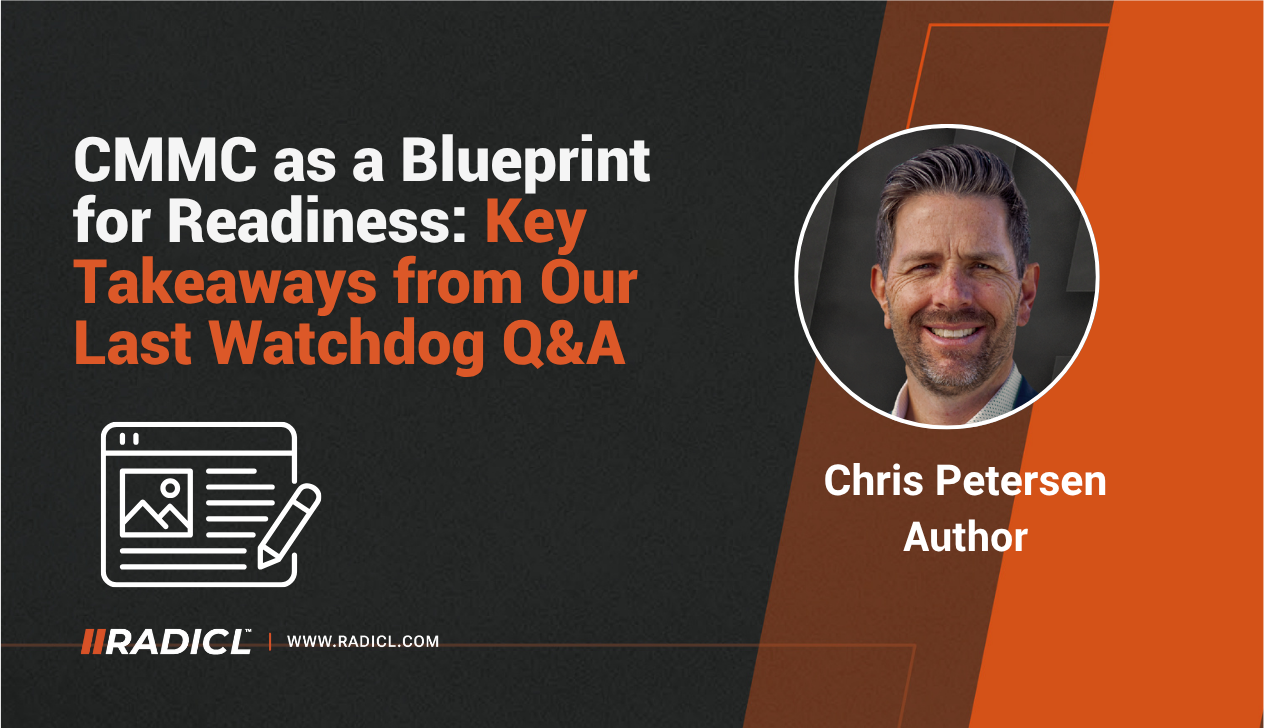The 2025 DIB Cybersecurity Maturity Report: What the Data Tells Us
by Chris Petersen on 2025 | 09

What This Report Represents
The 2025 DIB Cybersecurity Maturity Report is the most comprehensive analysis of cybersecurity readiness across America's defense industrial base. We surveyed 364 IT and cybersecurity leaders at small and mid-sized defense contractors to understand where they stand in protecting critical defense capabilities. Access the complete findings here.
This isn't market research—it's strategic intelligence. Every data point represents real companies facing real threats while supporting real defense missions.
Why We Do This Work
At RADICL, we conduct this research to inform our own operations and provide industry guidance to the firms we serve. Understanding the posture of the defense industrial base is as important as securing it.
Our daily work with defense contractors gives us visibility into both the challenges they face and the solutions that actually work in practice. This report translates that operational experience into actionable intelligence for the broader DIB community.
Why SMBs in the DIB Matter
Small and mid-sized defense contractors are the innovation engine of American defense superiority. While primes integrate large systems, SMBs solve the hardest technical problems—building the sensors, software, and precision components that give the U.S. military its edge.
When a nation-state compromises one of these firms, they aren't just stealing business data—they're prying into the secrets that shape America's military advantage. Every SMB that strengthens its cybersecurity posture strengthens the nation's defense.
Progress from 2024 to 2025: Signs of Momentum
The data shows that defense contractors are taking cybersecurity more seriously:
- Cybersecurity priority is rising: 77% now consider it a high or very high business priority, up from 61% last year.
- CMMC awareness is nearly universal: 98% are familiar with the requirements.
- Compliance is inching forward: 17% have reached Level 2, a 55% jump year over year.
- Detection is getting faster: Contractors taking a week or more to identify threats dropped from 59% to 38%.
- Provider churn is slowing: 52% still plan to change providers, but that's down sharply from 82%.
The direction is positive. Cybersecurity is no longer dismissed as "just an IT problem"—it's becoming recognized as business survival.
The Persistent Gaps
Yet the data also exposes stubborn weaknesses:
- Expertise is thin: Over half of contractors rate their effectiveness in hunting, investigating, and monitoring threats as low-to-medium. The tools exist, but the knowledge to wield them is lagging.
- Compliance isn't reality: Awareness is high, but only 17% have actually achieved Level 2 readiness.
- Costs are mounting: 37% report annual cybersecurity expenses above $100K, with some exceeding $500K—yet breaches and risks persist.
In short: progress is real, but gaps remain wide enough for adversaries to exploit.
Get the Complete Analysis
The findings above represent key highlights from our comprehensive research. The full 2025 DIB Cybersecurity Maturity Report includes detailed breakdowns by company size, technical analysis, year-over-year comparisons, and actionable recommendations for defense contractors.
Download the 2025 DIB Cybersecurity Maturity Report
What Success Looks Like
The most resilient contractors share a common mindset:
- They treat cybersecurity as operational excellence, not overhead.
- They invest in expertise, not just technology.
- They go beyond baseline compliance to programs worthy of the missions they support.
- They focus relentlessly on speed—detecting and responding in hours, not days.
These are the firms primes prefer and adversaries find hardest to compromise.
The Path Forward
America's defense supply chain faces patient, well-funded nation-state adversaries. The data shows progress is possible—but also that the margin for error remains thin.
Contractors who make cybersecurity a core discipline, close the expertise gap, and prepare for threats as they truly are—not as the compliance checklist describes them—will set themselves apart.
Because ultimately, securing the defense industrial base isn't about passing audits. It's about protecting the technological advantage that keeps America safe.
Access the Full Research
Ready to see where your organization stands? The complete 2025 DIB Cybersecurity Maturity Report provides the detailed analysis and benchmarks defense contractors need for strategic planning.
You May Also Like
These Related Stories

CMMC as a Blueprint for Readiness: Key Takeaways from Our Last Watchdog Q&A

Announcing our $3M pre-seed round to fight nation state cyber threats and ransomware



No Comments Yet
Let us know what you think